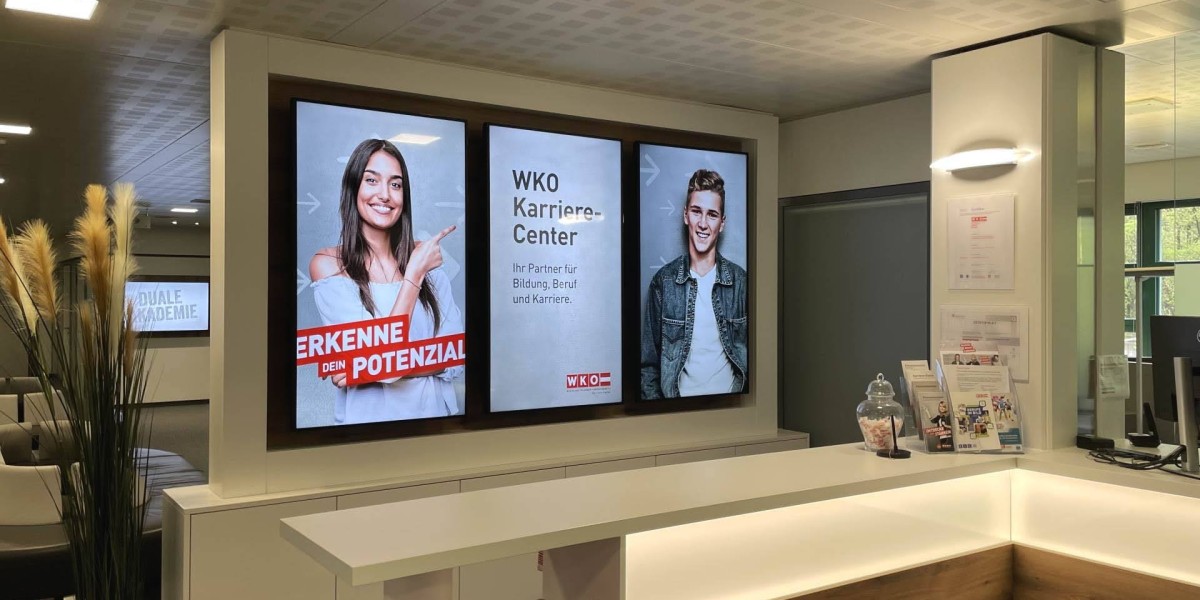As the world is now moving towards the technological era the food and beverage industry is not left behind. Among the most important innovations in restaurant technology is the use of electronic menu board which go by the other name digital menu boards. These contemporary menu boards are gradually replacing the conventional written or even graphic menu boards, and they are beneficial to the restaurant owners in many ways.
What Are Electronic Menu Boards?
Electronic menu boards are therefore electronic displays that inform the customers on the various meals available, their prices, and any other relevant information. These boards employ the use of LCD, LED or projection screen in presenting dynamic content and are more appealing than conventional signs.
These are electronic displays that are managed by a content management system or CMS that enable the restaurant owners to change the menu items remotely and in real time. This feature is especially advantageous to the establishments that have several branches since it makes it easy to maintain standardization and make changes on all the branches.
Benefits of Digital Menu Boards
1. Enhanced Customer Engagement
Digital menu boards are a more interesting way of presenting the menus to the customers. These boards are not like conventional menus where you only have text and images that may not be very appealing to the customers and compel them to choose a certain dish. The application of bright pictures and proper calls to action can have an impact on the purchasing process and add to the customers’ satisfaction.
2. Easy and Instant Updates
Another benefit that can be attributed to electronic menu boards is the update flexibility that can be achieved almost instantly. It is much easier to make changes on a digital menu than on a printed one; for instance, a restaurant owner can change the price, add a new meal, offer a daily or seasonal special meal, and so on without having to reprint the menu. This feature is particularly important for fast food chains, cafes and restaurants that have a frequently changing menu.
3. Cost-Effective in the Long Run
While the initial costs of digital menu boards could be quite high, they are very economical in the long run. The reduction of the printing expenses, less labor for menu changes, and the possibilities for more sales due to promotional offers are also long-term benefits.
4. Improved Order Accuracy
Easy and clear menu displays are also obtained by the use of digital boards which enhances the reduction of confusion among customers and less errors in placing their orders. In this way, restaurants can improve the process of ordering food and avoid confusion that may occur due to a misunderstanding of certain terms, for example, when it comes to allergens.
5. Boosts Upselling Opportunities
Digital menu boards help restaurants to advertise high-margin products and even offer suggestions to the customers. For instance, an animated ad for a combo offers or a discounted offer is likely to make the customer’s order more. This strategic approach has the potential of increasing the overall revenue of the organization.
6. Eco-Friendly Solution
Consequently, electronic menu boards are an eco-friendly innovation since they do not require the use of paper menus. Digital menus also help the restaurant to embrace sustainability to meet the clients’ demands for companies that embrace sustainable practices.
Applications for Digital Menu Boards
Quick Service Restaurants (QSRs) and Fast Food Chains
QSRs and fast-food joint benefit from digital menu boards because the menus can be updated in real time, the restaurants can operate and manage many branches, and the ordering is made easier. Mobile menus have also become more common in the digital environment, which also improves the speed of delivery service to the customers.
Cafes and Coffee Shops
In coffee shops, digital menu boards are used to advertise seasonal drinks, promote loyalty programs, and recommend foods to be taken with the drinks. This means that the use of dynamic visuals is a good way to make specialty drinks and pastries look more appealing.
Fine Dining and Casual Restaurants
Some of the fast-food businesses are also using electronic menu boards in a bid to increase the dining experience. They can include digital wine lists, recommendations from the chef, and history and narrative about the restaurant’s food.
Bars and Breweries
Many of the bars and breweries employ the use of digital boards in presenting the beers of the season, cocktails, and the happy hour offers. This setup enables businesses to change the selection on the menus without having to reprint the menus.
Key Features to Look for in a Digital Menu Board
There are several factors that should be taken into consideration when choosing an electronic menu board as follows:
• High-Resolution Display: Crisp visuals and bright screens for better readability.
• Friendly CMS: The software that allows easy modification of the menu by the user.
• Remote Management: Ability to update the menus from remote location through cloud.
• Integration with POS Systems: Sync menus with the restaurant’s point-of-sale for accurate pricing and availability.
• Branded Templates: This is where the layout of the message is already created to ensure that the company brand is upheld.
The Future of Digital Menu Boards
However, in the process of technological development, digital menu boards will also evolve with such innovations as an AI recommendation, voice control, and augmented reality. Advancement in technology is likely to advance even further in the future in the restaurant business mostly through automation and personalization.
Conclusion
The use of electronic menu boards is slowly becoming the new trend in restaurants since they are effective in changing the menu frequently and also in the amount of money that the restaurant saves since the menu boards are digital. Digital menu boards can be used in a fast-food restaurant, and an upscale restaurant, and even a café; they are an efficient and eye-catching way to advertise the meals. Thus, such a shift to digital menus is an investment that any progressive company should consider given the availability of remote control, sustainability, and additional revenues.








